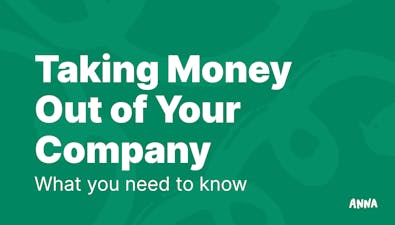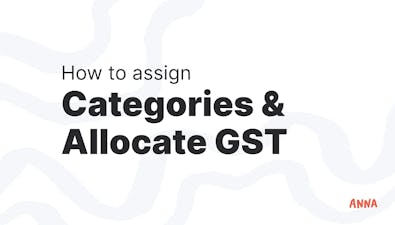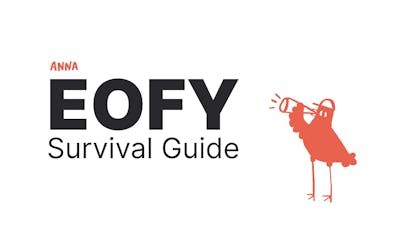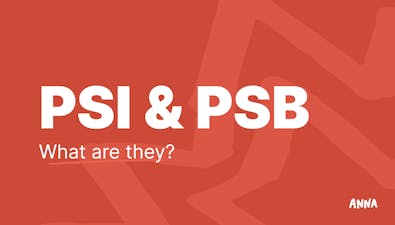
How to Register as a Sole Trader in 2025 [5-Step Guide]


Learn how to register as a sole trader in Australia with this guide, covering requirements, the setup process, and benefits for your business.
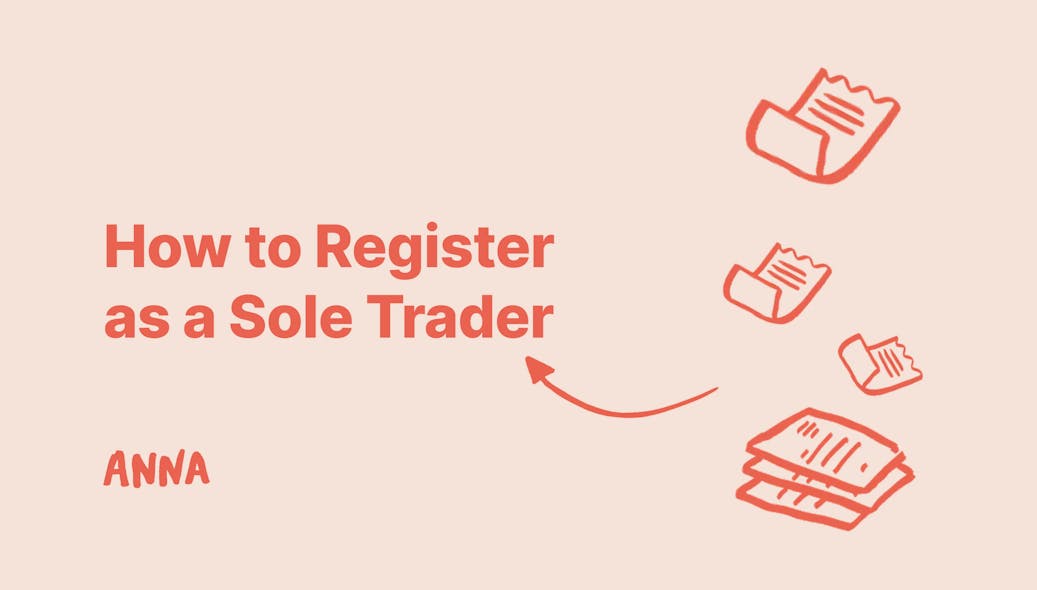
Whether you're freelancing, expanding a side hustle, or testing a business idea, registering as a sole trader is one of the simplest and most flexible methods to get started in Australia.
This guide will walk you through everything you need to know about how to register as a sole trader, from obtaining your tax file number and ABN, to registering your business name, setting up GST, and creating a business bank account.
You'll also learn which tool can help you keep organised once you're up and running.
Let us break it down to get your business idea off the ground!
What Is the Sole Trader Structure?
A sole trader is an individual who runs a business without creating a separate legal body.
You maintain complete ownership and control of all business decisions and assets.
Key Features:
🔶 There is no legal separation; you and your business are considered the same thing.
🔶 You are individually liable for all debts, losses, and legal claims against the business.
🔶 Business income and costs are included in your personal tax return.
🔶 GST registration is required if the annual turnover reaches $75,000.
🔶 Superannuation is not required for yourself; however, voluntary payments are permitted. It is mandatory for the employees you hire.
What Are the Benefits of the Sole Trader Structure?
Here are a few benefits:
✔️ Minimal paperwork - There is no requirement to register a distinct legal body (unlike a company).
✔️ Low fees - The only expense is for optional business name registration (~$42 per year).
✔️ Complete ownership - There are no partners or stockholders to consult.
✔️ Direct decision-making - Flexibility to respond promptly and without bureaucratic delays.
✔️ Single tax return - Business revenue and losses are reported on your individual tax return.
✔️ Tax loss offsets - Business losses can be used to offset other types of taxable income (such as investments).
✔️ Scalability - It is simple to start modest and then grow later, even adding workers.
A sole trader business structure is ideal for:
✔️ Freelancers, consultants, and small-scale operators.
✔️ Businesses with fewer liability risks (such as home-based services).
✔️ Businesses that test concepts before formalizing their company structure.
If you want to learn how to change your business structure to a company, you can learn more in our article How to Change from Sole Trader to Company!
How to Register as a Sole Trader?
Registering as a sole trader in Australia is a simple process. Follow these steps to set up your business!
1. Obtain a Tax File Number (TFN)
As a sole trader, you don't need a separate business TFN.
Your own TFN manages both individual and business tax responsibilities.
Follow these steps to find your Tax File Number (TFN):
✅ Examine previous tax returns, ATO communications, or your myGov account linked to the ATO.
✅ If lost, contact the ATO directly to recover it.
In case you don’t have a TFN but are an Australian citizen with an Australian passport, follow these steps to apply for a TFN online:
- You must be 15 years old or older and hold an Australian passport that is not more than 3 years old.
- Australian citizenship requires being born in Australia, possessing a citizenship certificate, and having at least one additional Australian identifying document, such as a driver's license.
- Set up your “Strong myID.”
How To Set Up a Strong MyID?
Download the myID app from the Apple App Store or Google Play Store for your compatible smart device.
✅ Enter your personal information, including your full name and date of birth.
✅ If you have an existing myGov account, the email address you supply for myID must match.
✅Verify your Australian passport with one of the following Australian identification documents. Required documents include a citizenship certificate, driver's license (including learner's permit), and medicare card.
✅ Verify your photograph.
How to Apply for TFN Using myID?
When you're ready to apply for your TFN with your myID:
✅ Review and agree to the Terms and Conditions.
✅ Select Continue with digital ID.
✅ Confirm that you have a digital ID
✅ Sign in to your myGov account or create an account.
✅ Connect your myID.
✅ Complete your TFN application.
2. Apply for an Australian Business Number (ABN)
The ABN is a unique 11-digit number that identifies your business or organisation to the government and the community.
You may be subject to an ABN entitlement check at any time.
If ABR conducts a review, you will be required to provide evidence that you began or took measures to begin your business or organisation on the start date specified in your ABN application.
Follow these steps and apply for an ABN:
✅ Visit the Australian Business Register.
✅ Fill out the online form and provide:
- Personal details - Full name, date of birth, residential address, and contact information.
- Tax File Number (TFN) - Required for sole traders.
- Business details - Start date (within 6 months), business activity description, expected yearly turnover.
✅ Choose "Sole Trader" as your business structure.
Your application will be handled more quickly if they can identify you using the information you provide, such as your tax file number.
If your application succeeds, you will receive your ABN immediately.
❗Print or keep the confirmation of your ABN and ABN information. Your details will be added to the Australian Business Register (ABR).
- If you receive a reference number, it may indicate that they need to examine some details in your application or that more information is required.
- They will assess your application within 20 business days and contact you if they require any additional information.
Check out our article and learn more about how to check the ABN application status of your business!
3. Register Your Business Name
If you intend to trade under your own personal name, for example, "Amelia Allen", you can avoid the business name registration process.
However, if you want to operate under a different name, such as "Allen Creative Co.," you must register it with the Australian Securities and Investments Commission.
Step 1: Check Name Availability
Before choosing a business name, be sure it isn't already in use.
You can do this by searching the ASIC Business Name Register via ASIC Connect.
This tool lets you see if your selected name is available or if it has already been taken by another entity.
💡ProTip
ANNA Money allows you to register your business name effortlessly!
- Pick a name
- Share details about your business
- Get a notification when your application is complete!
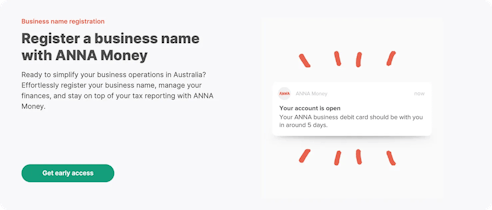
Step 2: Check for Trademark Conflicts
Even if a business name is available, it may infringe on existing trademarks.
To avoid potential legal concerns, use IP Australia's Australian Trade Mark Search to determine whether your proposed name is similar to any registered trademarks.
This process ensures that the business name does not clash with existing intellectual property rights.
💡ProTip
ANNA's online trademark registration allows you to swiftly and easily protect your brand and intellectual property!
- Our user-friendly online platform allows you to complete your trademark application in a matter of minutes.
- Get rapid, reliable trademark protection with no hidden fees.
- Get advice from skilled trademark attorneys at every stage of the procedure.

Step 3: Register Your Business Name
You can register a business for one or three years:
- $44 for a year
- $102 over three years
After this time, you must renew it. The fees for renewing a business are the same as registration.
Follow these steps:
✅ Log in to ASIC Connect and pick the 'Licences and Registrations' tab.
✅ Choose 'Business name' from the drop-down menu.
✅ Enter your Australian Business Number (ABN).
✅ Enter the suggested business name.
✅ Select the registration period.
✅ Enter the information for the holder of the business name.
✅ Enter the intended business name's address.
✅ Confirm eligibility to use the business name.
✅ Make payment and confirm your transaction.
If you wonder if you can change your business name, check out our article How to Change Business Name as a Sole Trader!
4. Register for Goods and Services Tax (GST)
You need to register for GST when:
🔺 A business has a GST turnover (gross income from all operations minus GST) of $75,000 or more (the GST threshold).
🔺 You start a new business and expect your turnover to reach the GST threshold (or greater) within the first year of operation.
Once you have an ABN, you can register for GST:
✅ You can access business services online.
✅ By phone at 13 28 66.
✅ Through your registered tax agent or BAS agent.
✅ By filling out the Add a new business account (NAT 2954) form, which can be ordered through the ATO publication ordering service.
5. Open a Bank Account
While many sole traders use personal accounts, creating a dedicated business bank account can make financial management easier.
Here are the key benefits of having a separate bank account:
✔️ Track deductible expenses (e.g., equipment, trip) without going through personal transactions.
✔️ Isolating business revenue and spending can help reduce errors in BAS statements and tax filings.
✔️ Monitor cash flow in real-time to minimise overspending or shortages.
✔️ Prepare accurate financial accounts for lenders, investors, and prospective buyers.
✔️ Using the business name on invoices (rather than your own name) increases credibility with clients.
✔️ You will avoid sharing personal account information for consumer payments.
✔️ Having clearly segregated records saves time during audits or tax examinations.
💡 ProTip
ANNA Money can simplify this step for you!
With a business account, you can:
👉 See all your finances in one place
👉 Get instant payment notifications
👉 Arrange scheduled or recurring payments
👉 Get debit cards and virtual cards
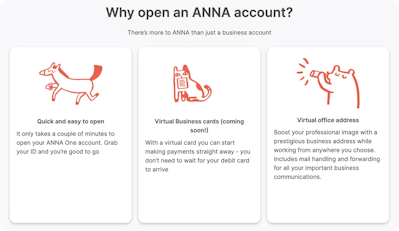
Conclusion
If you follow these steps, starting a business as a sole trader can be considerably easier for you. From selecting a business name to opening a bank account, each step aims to get you up and running quickly and with as little difficulty as possible.
However, once you're up and running, staying on top of your finances might be the difference between running a side hustle and building a sustainable business.
This is where business tools, such as ANNA Money, come in!
How ANNA Money Can Help You With Your Sole Trader Business?
ANNA Money is a business tool available to any Australian resident who is starting a company or is a director of a limited company or a non-limited business structured as a company or sole trader.
Although the focus of this tool is on starting a company, here's what else you can get from it:
🚀 Business documents - Keep all of your receipts, invoices, and other business documents in one location. ANNA automatically matches transactions, extracts important information, and maintains everything organized and easily shareable.
🚀 Business account - Use debit and virtual cards, Apple Pay, Google Pay, and employee expense cards. Quickly examine your balance and easily keep track of your business expenses.
🚀 Registered Office Service - Maintain your privacy by keeping your home address off public records. Includes same-day mail scanning and forwarding in accordance with ASIC, ATO, and other regulatory organisations.
🚀 Matching receipts - Receipts are automatically matched with your transactions and grouped into categories.
🚀 Personalised tax calendar - Receive personalised notifications for impending tax deadlines, ensuring that you remain compliant and never miss a due date.
🚀 Support from Tax Experts - When you need it, our experienced support team is available to provide clear, expert guidance.
🚀 Bookkeeping Score - Easily monitor how successfully you manage your books. Get basic tips for being organised and keeping your finances in good shape.
🚀 Invoices - Create elegant, professional invoices in seconds.
🚀 Payroll - Easily manage payroll for yourself and your employees from the ANNA platform.
🚀 Goods and Services Tax (GST) - Track, compute, and report GST to the ATO automatically with only a few clicks.
🚀 Annual Accounts and Company Tax Return - Submit your yearly accounts to ASIC and your company tax return to the ATO directly through ANNA, all in one spot.
Ready to make your sole trader business management easier? Sign up and try it today!
FAQ
Can I Run 2 Businesses as a Sole Trader?
Yes, as a sole trader in Australia, you can run two businesses under the same ABN as long as they have the same legal structure (sole trader).
How Do I Pay Myself as a Sole Trader?
Keep in mind that all business earnings are taxed as personal income. To pay yourself, transfer money from your business account to your personal account ("drawings").
What Are the 3 Disadvantages of Being a Sole Trader?
Here are 3 main disadvantages:
1. Unlimited Personal Liability
You are personally liable for all business debts, legal claims, and duties. If the business fails to pay its financial obligations, creditors may pursue your personal assets (for example, your home or savings).
2. Tax inflexibility
Business income is taxed at personal income rates, which can reach 45% (plus the Medicare levy). Sole traders, unlike corporations, are unable to take advantage of reduced corporate tax rates (25-30%) or divide profits with shareholders.
3. Limited growth and funding options
Capital constraints - Difficulty raising financing from investors or lenders because you cannot issue equity or shares.
Scalability - Growth is limited by your own capacity, talents, and resources.
What Is The Difference Between a Sole Trader and a Self-Employed Person?
The terms sole trader and self-employed person are sometimes used interchangeably, but they have different meanings and implications. Here is the difference:
1. A sole trader is an individual who owns and conducts a business independently. Legally, the sole trader and the business are treated as one entity, which means the owner is individually liable for all debts and responsibilities.
2. Self-employment refers to individuals who work for themselves rather than being employed by others. It doesn’t define a certain business form and may include sole traders, freelancers, contractors, or even limited company directors.
Examples are a freelance graphic designer working on various projects and a consultant operating under a limited corporation.

